Abstract
1. Carotid body blood flow (c.b.f.), the arterio—venous oxygen (A—V O2) difference and oxygen consumption were measured in forty-seven cats, anaesthetized with pentobarbitone, paralysed with gallamine and ventilated artificially. Carotid sinus and cervical sympathetic nerves were intact throughout.
2. A system for perfusing the carotid body artificially with blood is described and evidence is given which shows that similar results were obtained whether the carotid body was naturally or artificially perfused.
3. With arterial pressure, blood gas tensions and pH within physiological limits, c.b.f. varied between 33 and 68 μl./min, average 41·5; A—V O2 difference between 0·21 and 0·46 ml./100 ml., average 0·34, and calculated oxygen consumption between 0·115 and 0·195 μl. O2/min, average 0·147.
4. With constant mean arterial pressure, hypoxia (30-40 mm Hg Pa, O2) or hypercapnia (> 50 mm Hg Pa, CO2) resulted in a small increase of c.b.f., up to 14 μl./min above control; an average fall of A—V O2 difference by 49% of control and an average fall of oxygen consumption by 36% of control.
5. Carotid body blood flow fell linearly with mean arterial pressure over the range 100-170 mm Hg, the slope of the curve varying between 0·78 and 1·22 μl. min-1. mm Hg-1. M.A.P. A—V O2 difference was unaffected so that oxygen consumption fell in proportion to c.b.f.
6. It is concluded that the unique response of the carotid body to these stimuli is a fall in oxygen consumption and that this bears a closer relation to the known pattern of chemoreceptor discharge than do changes in total blood flow.
Full text
PDF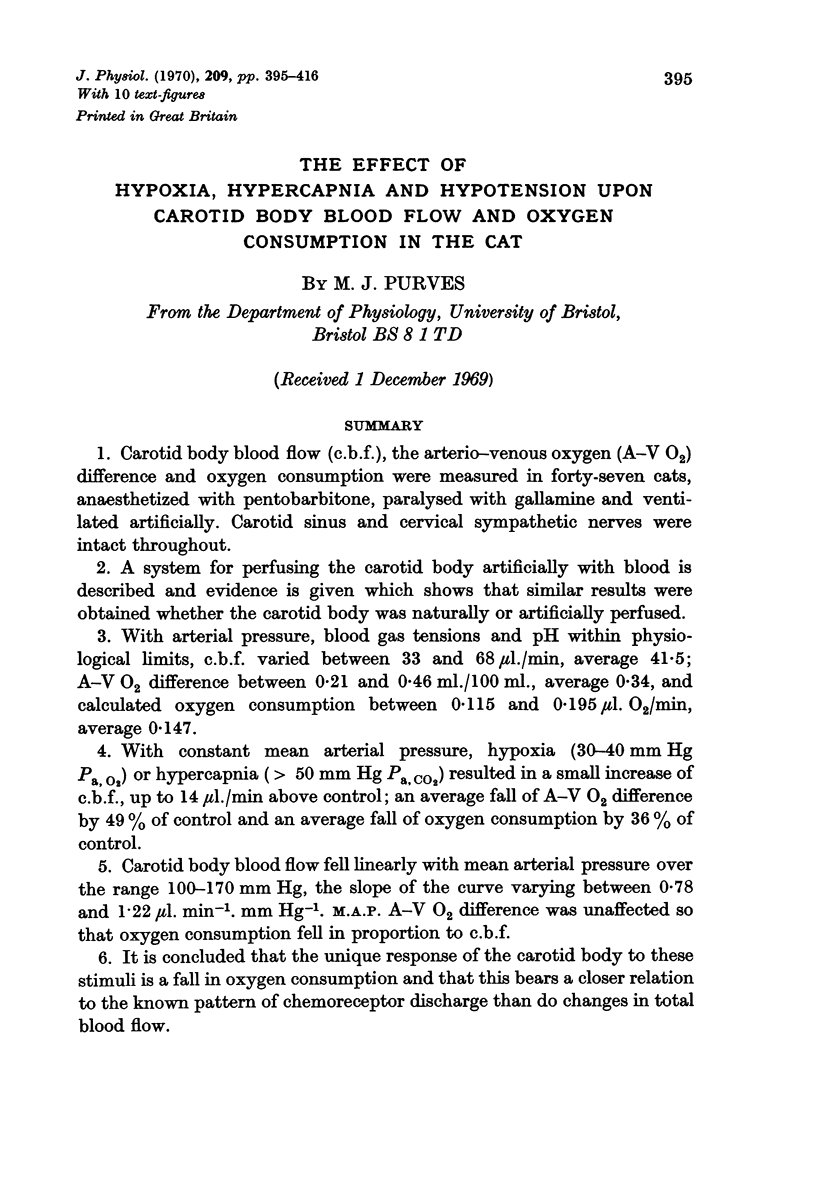
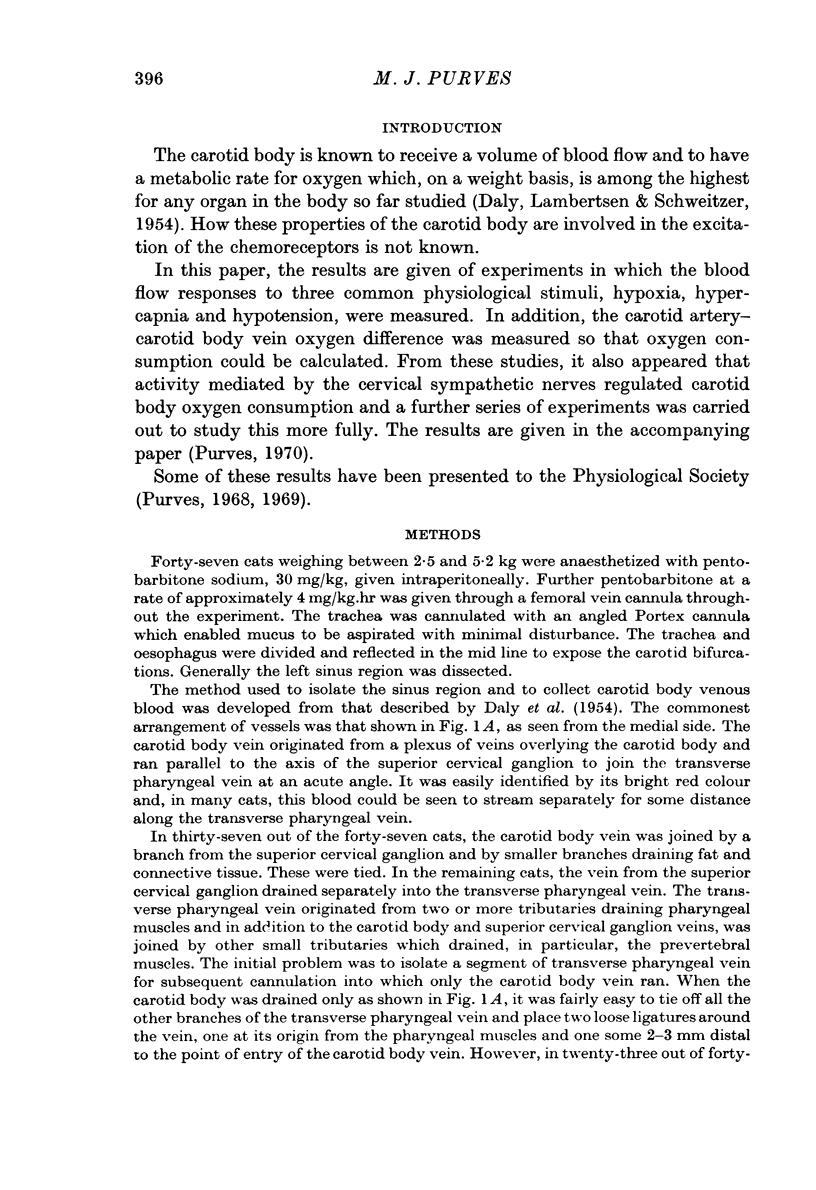
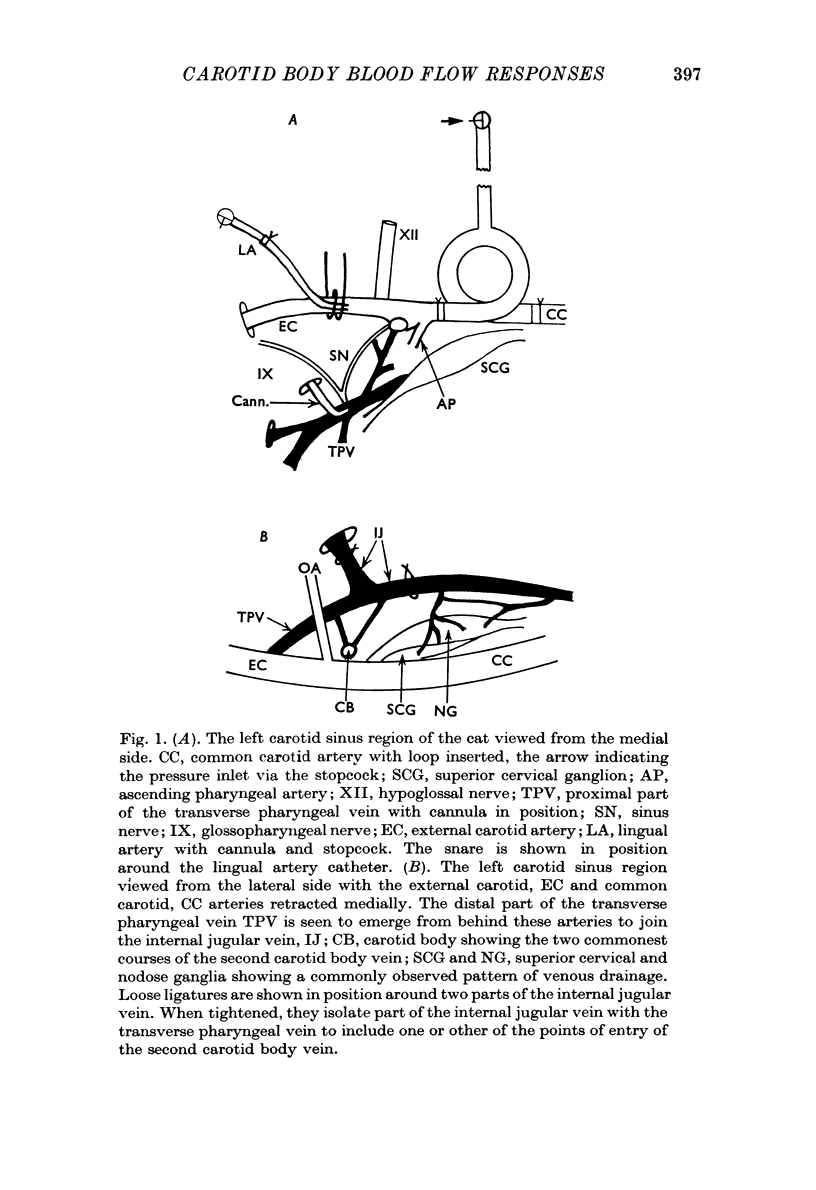
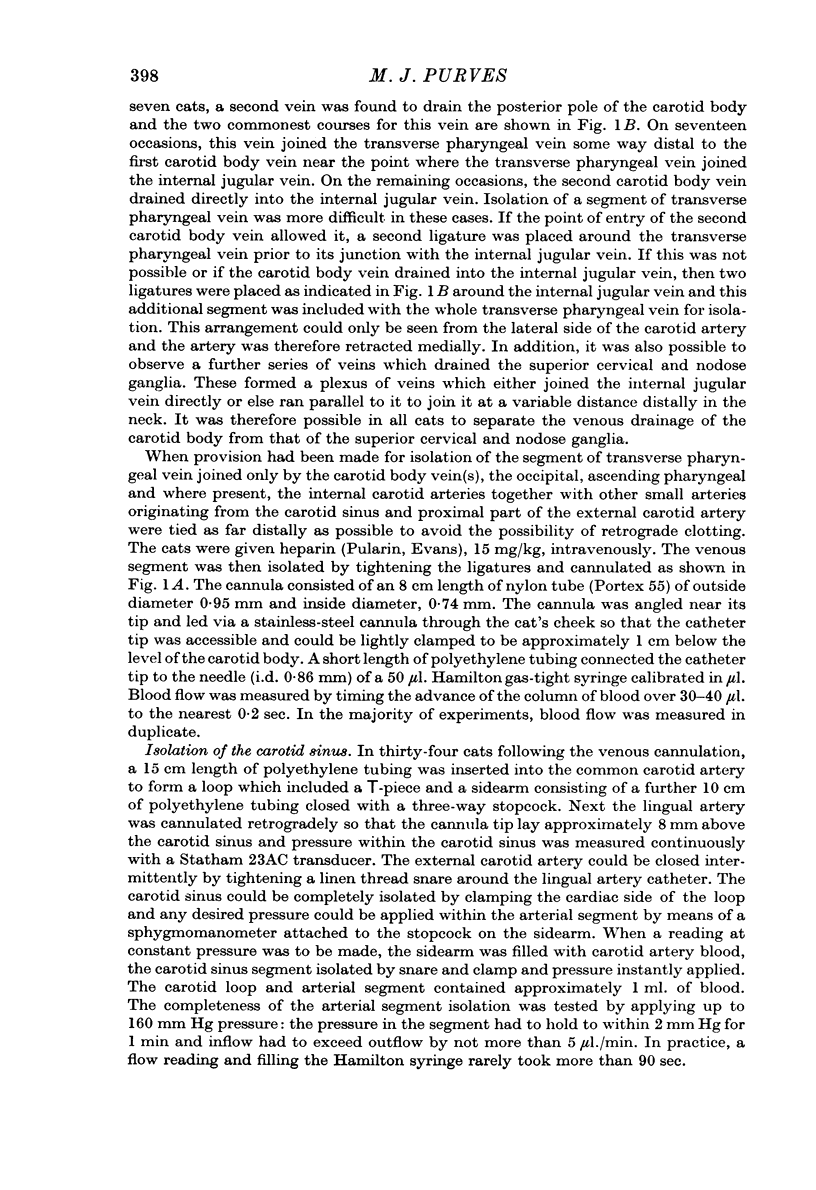
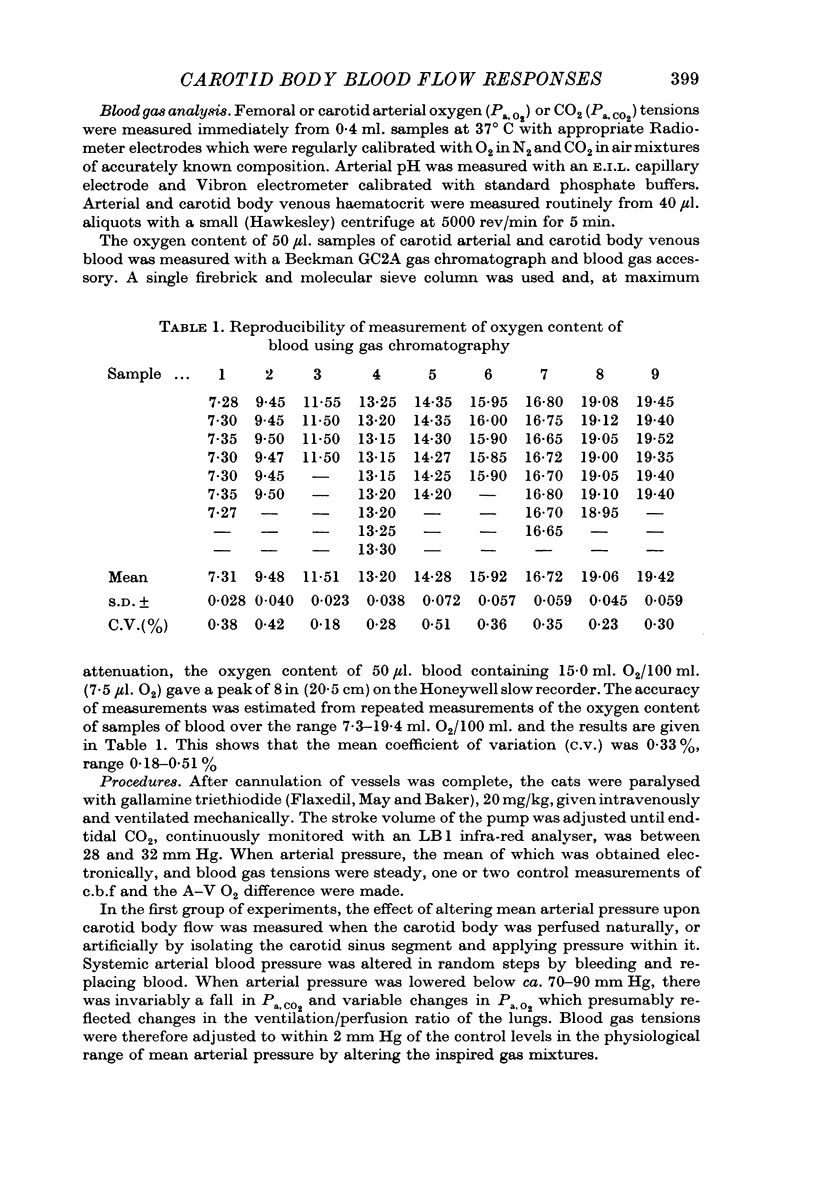
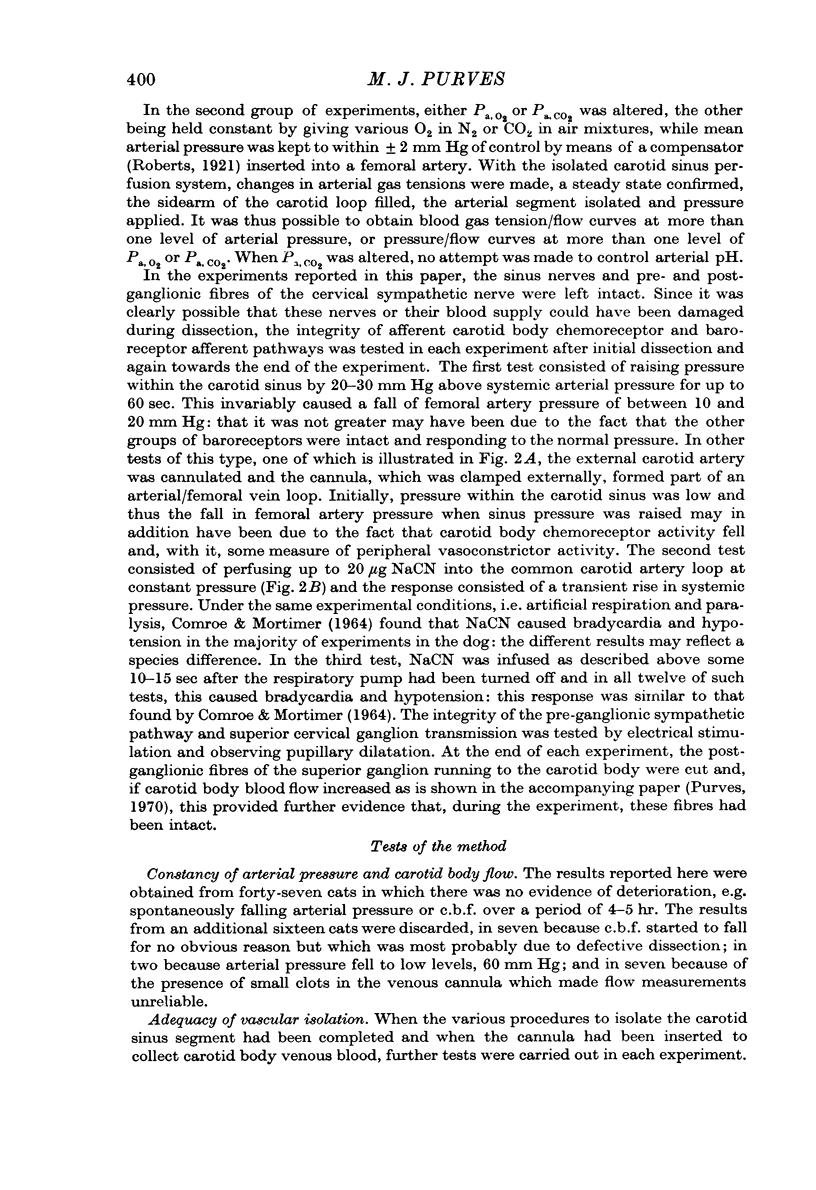
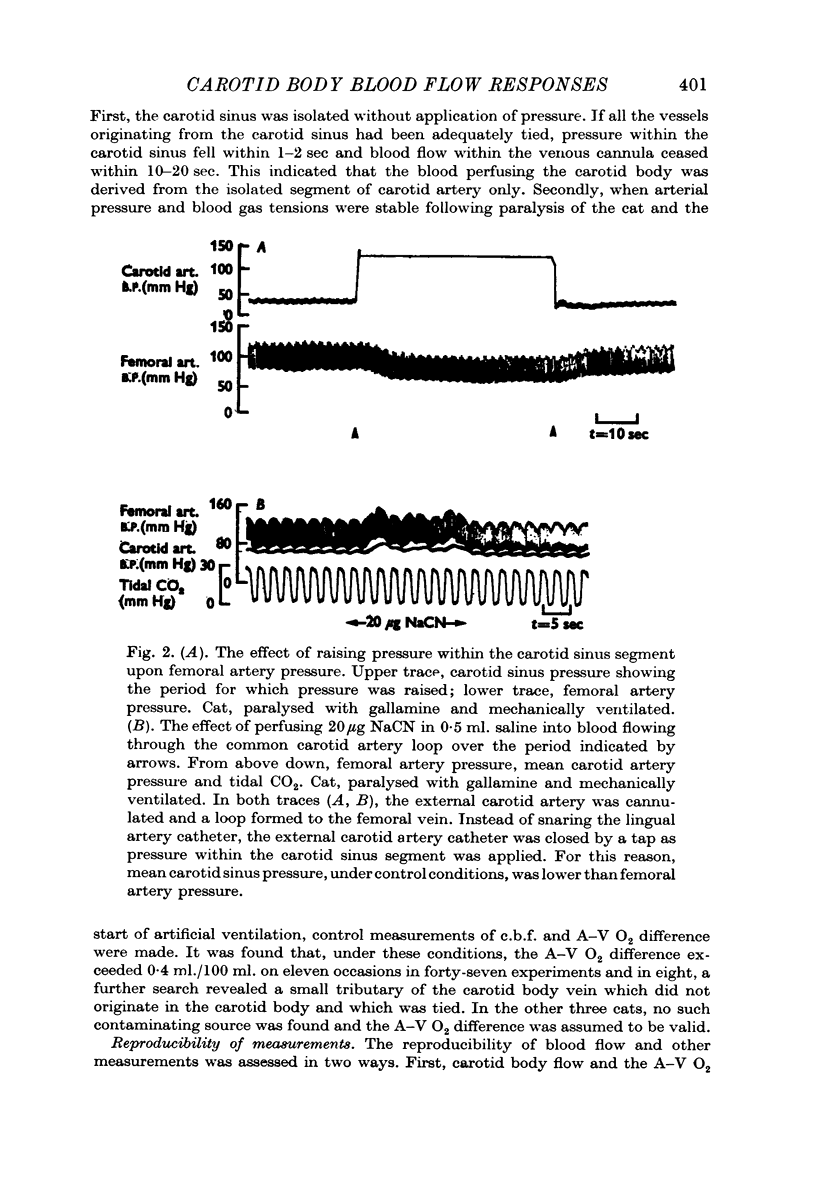
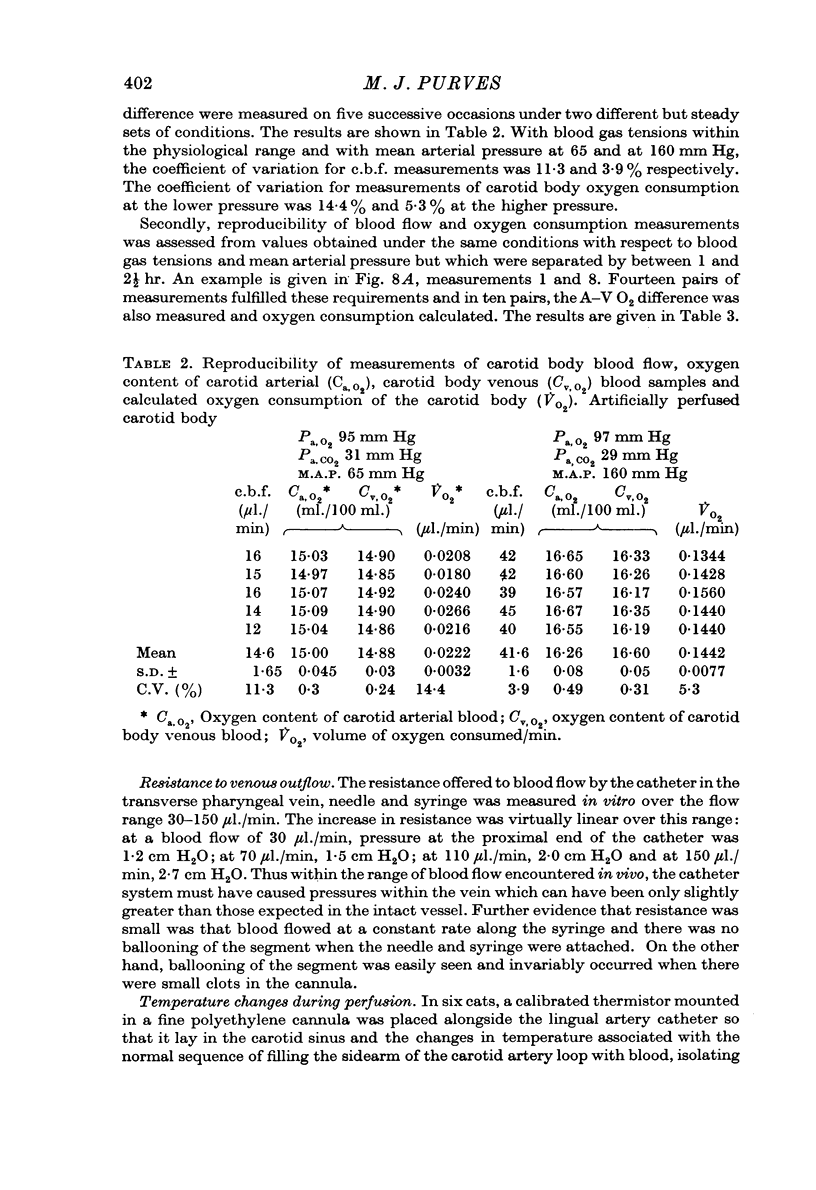
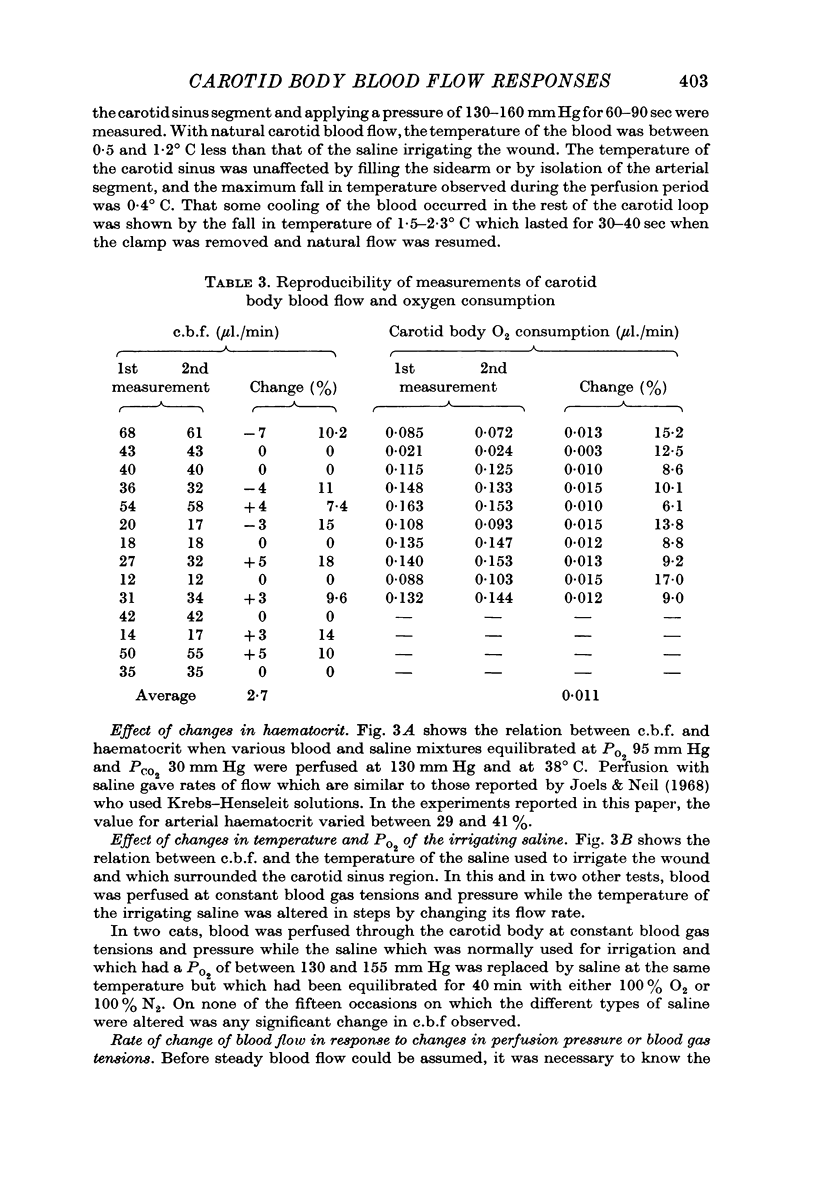
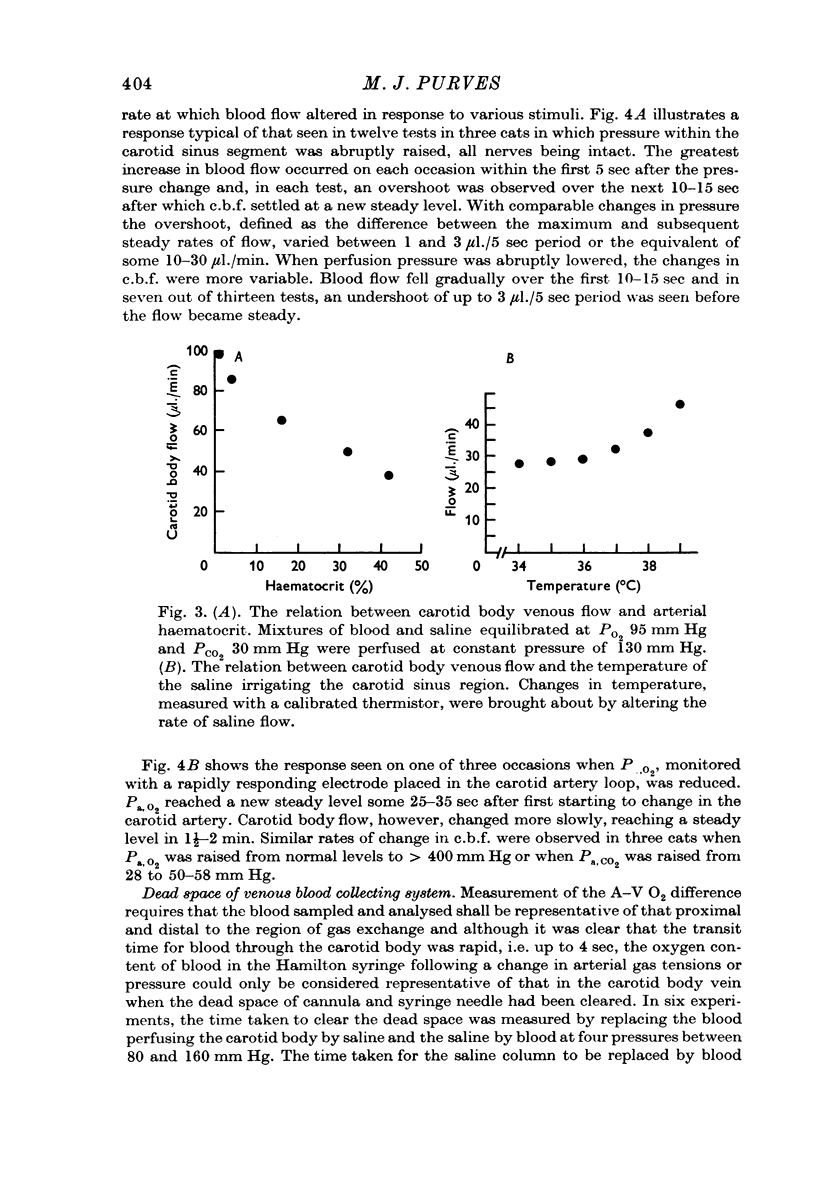
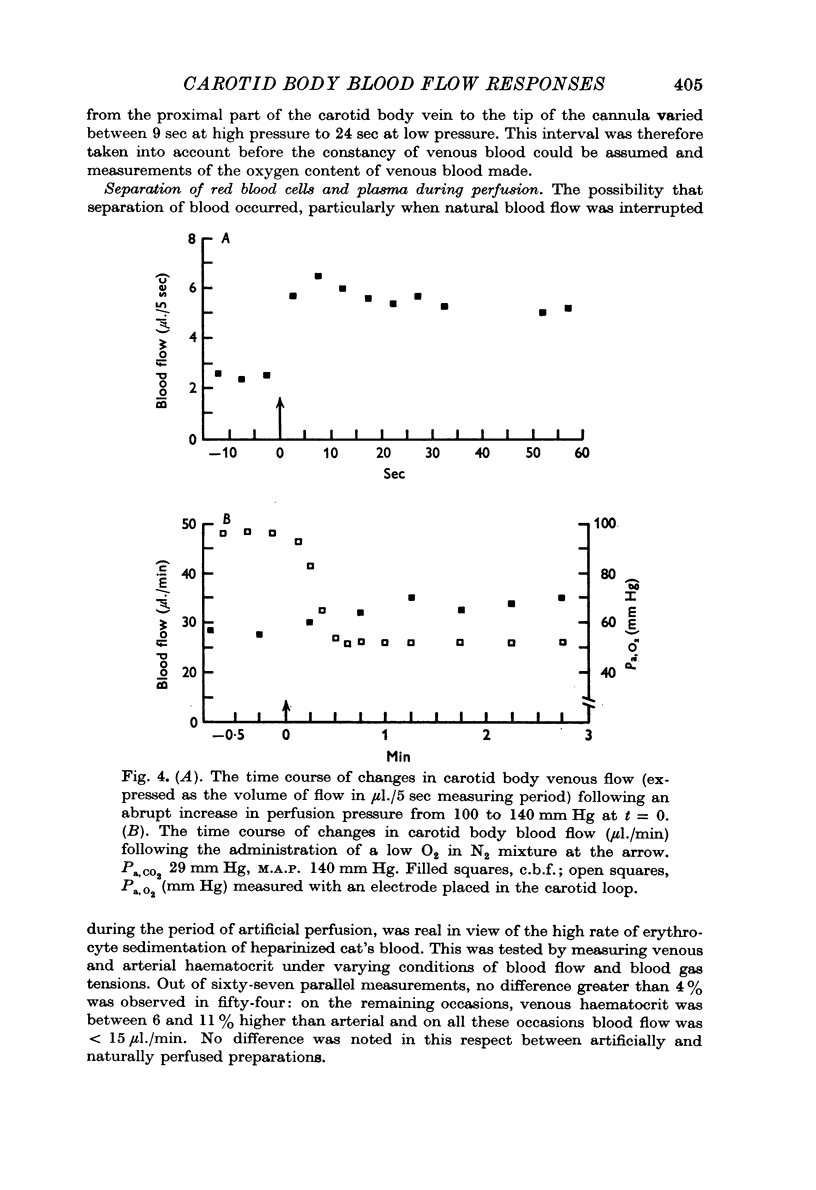
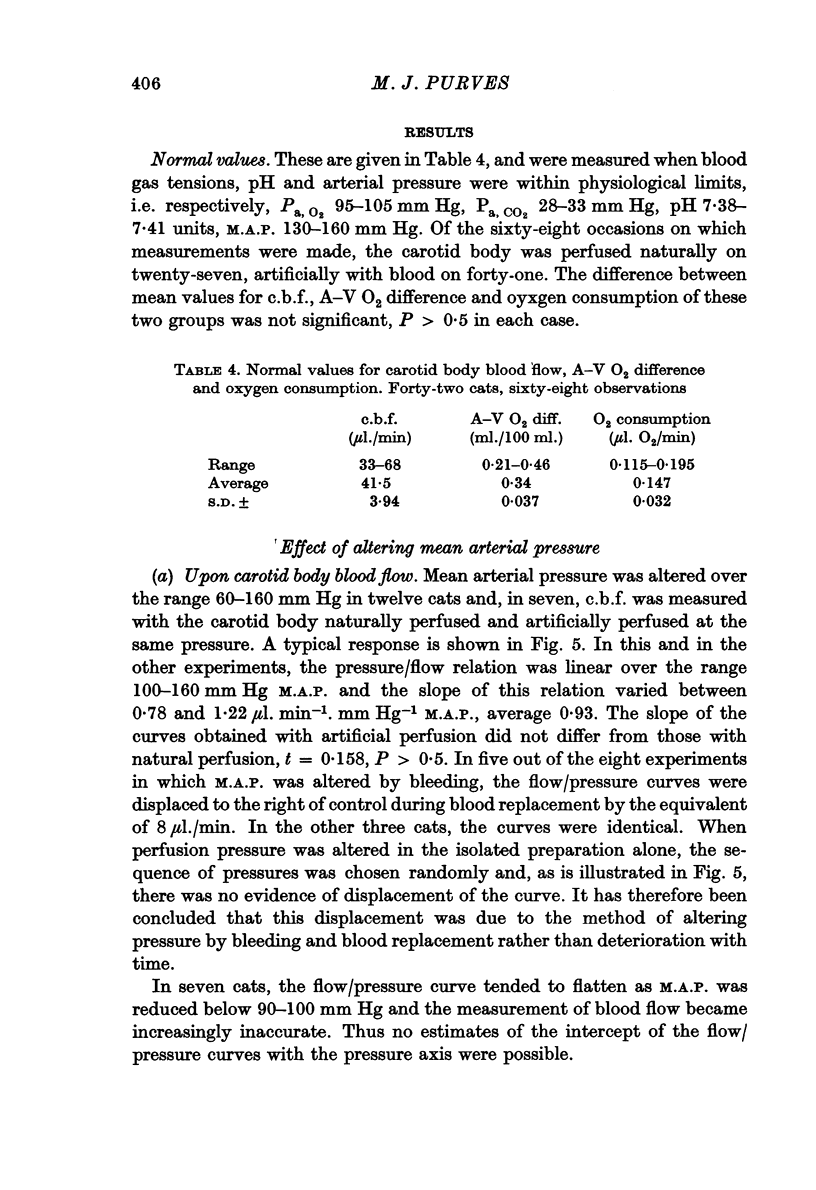
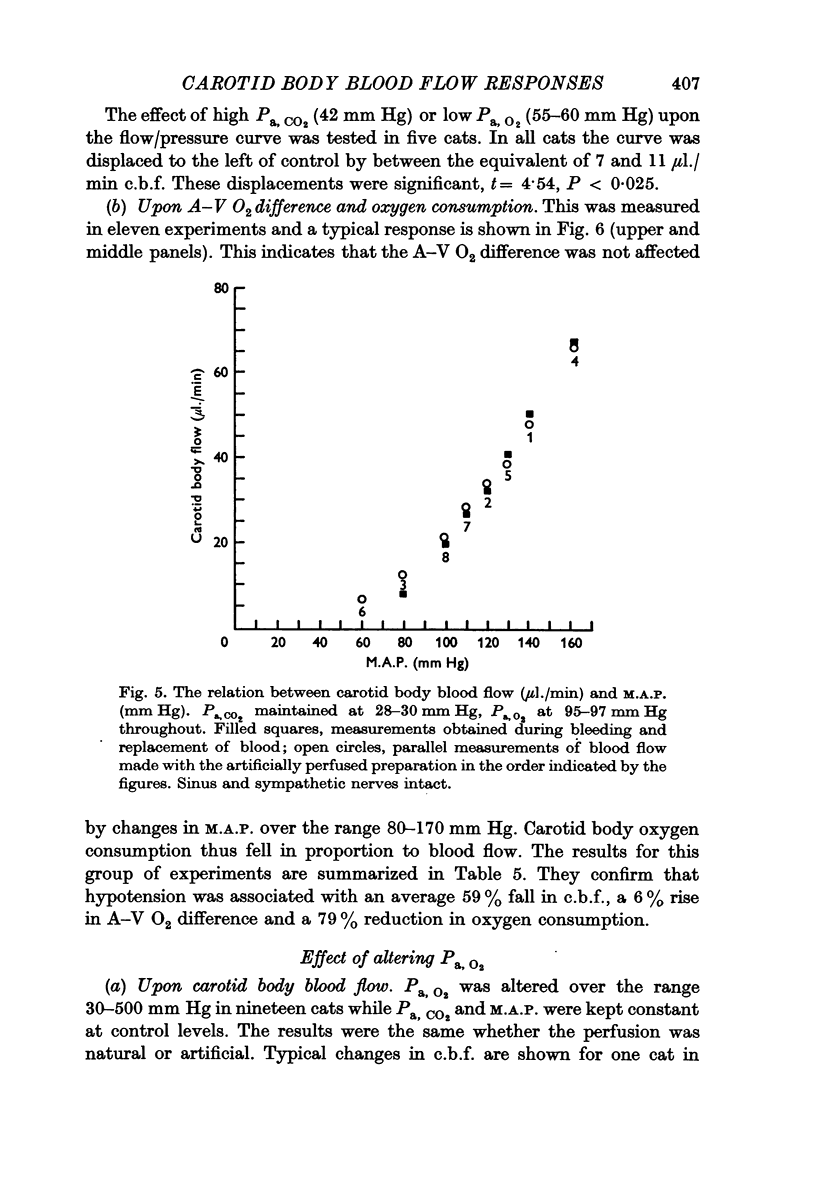

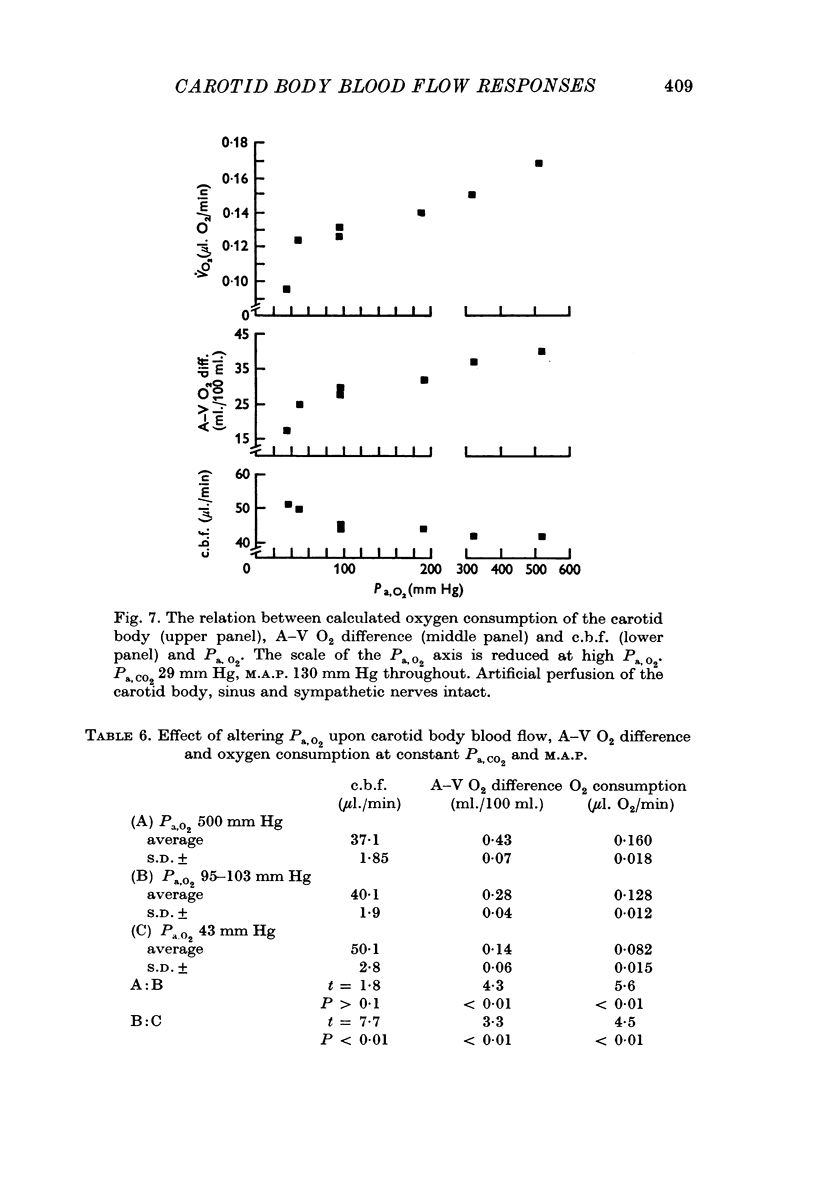
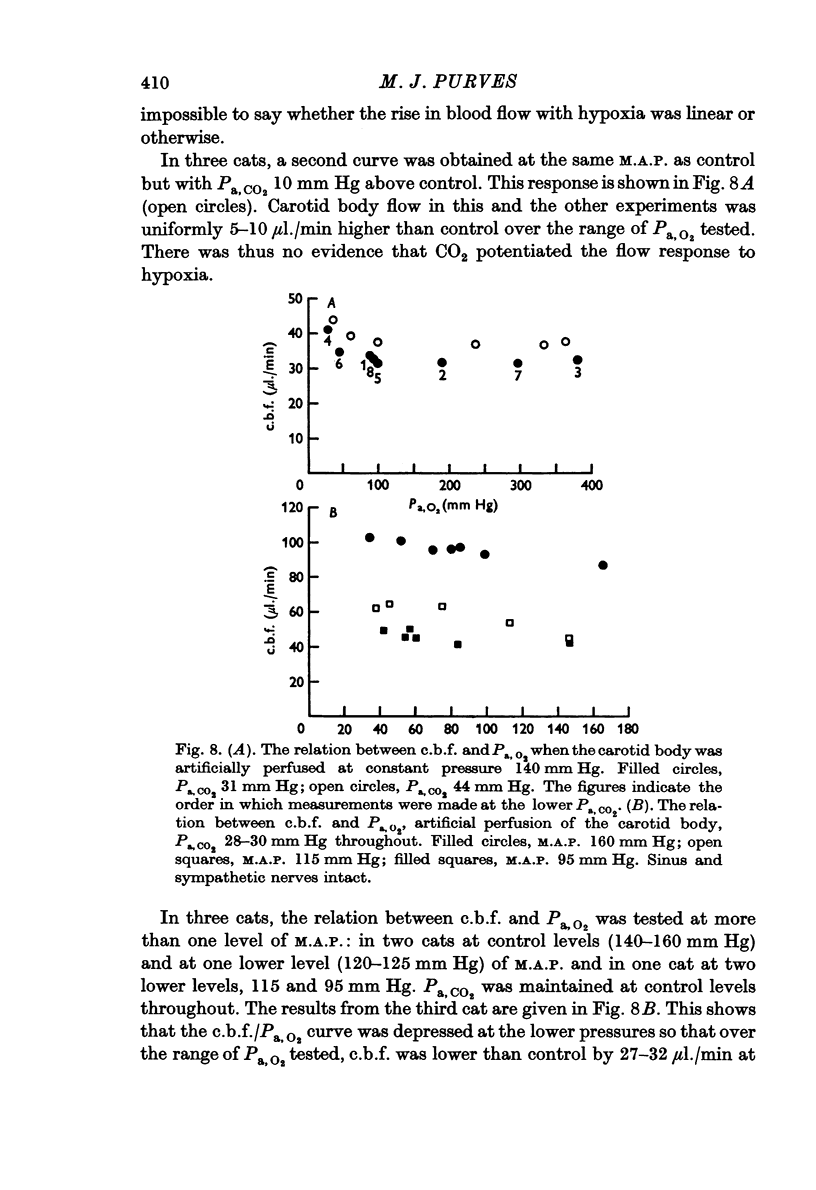
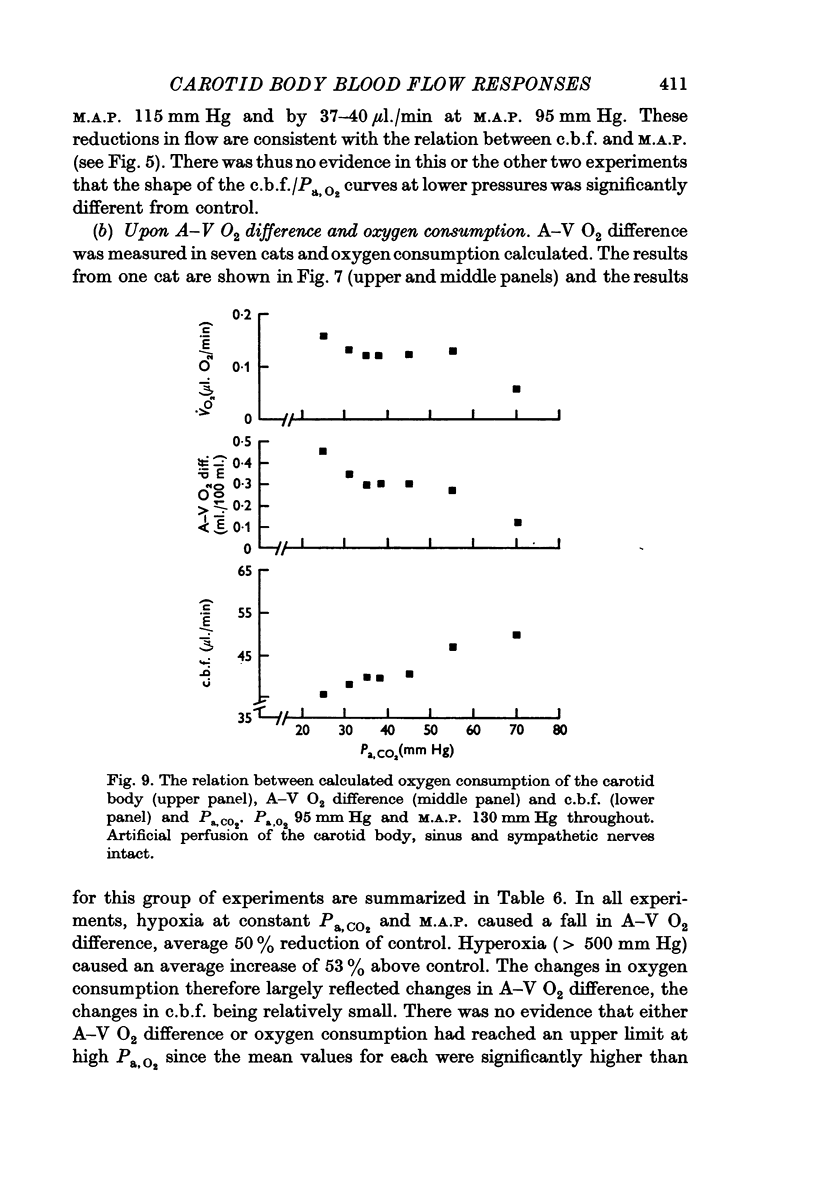
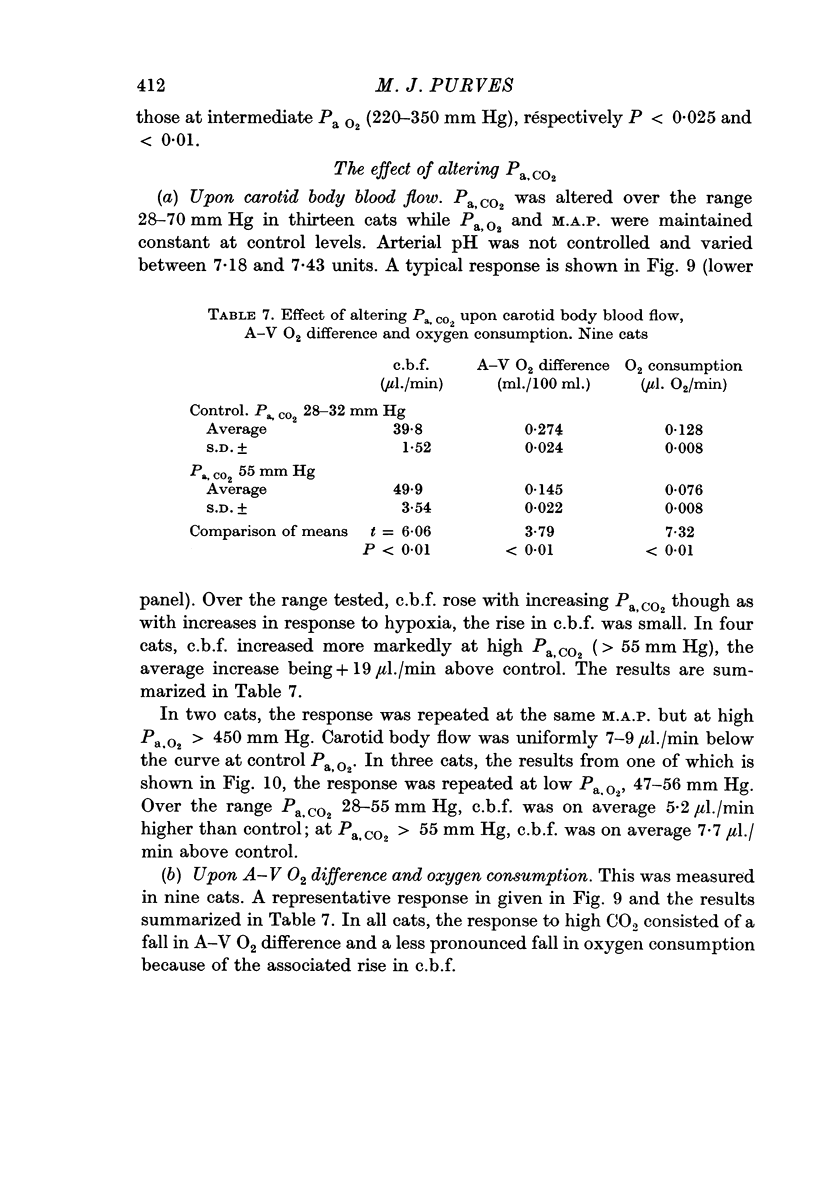
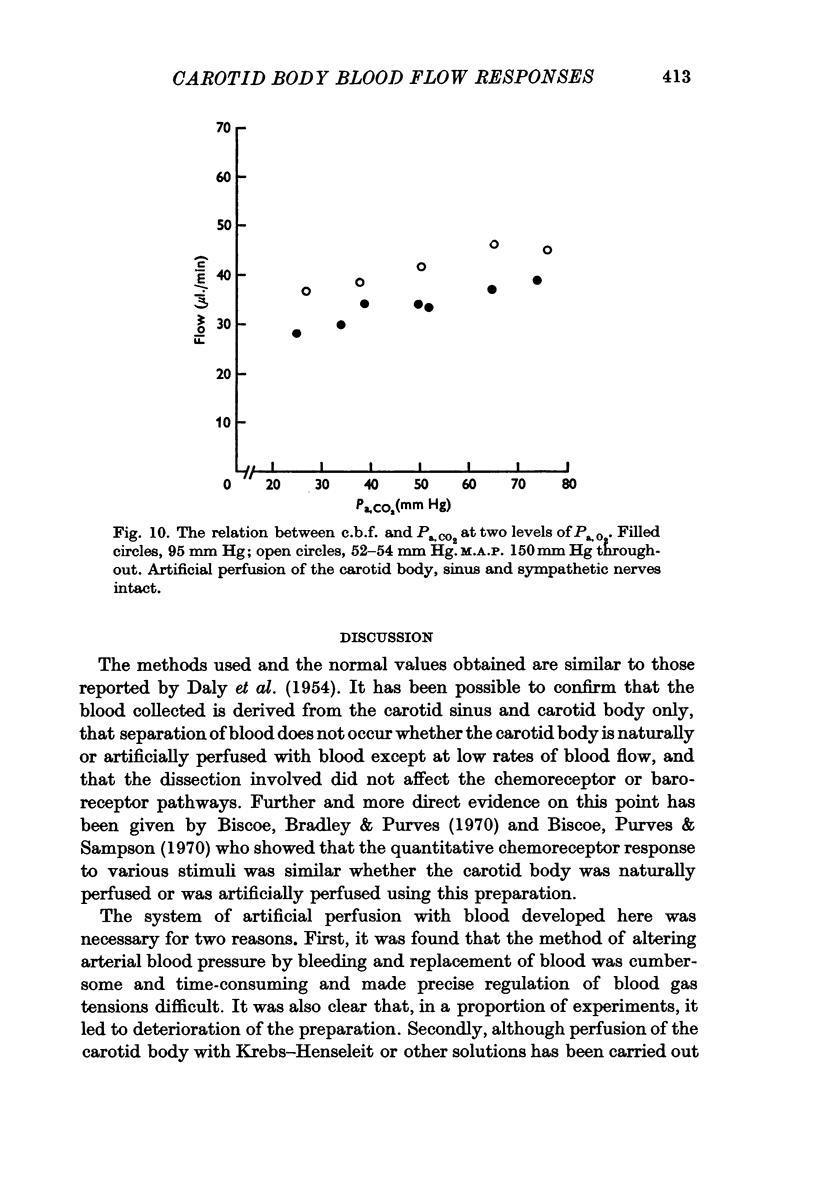

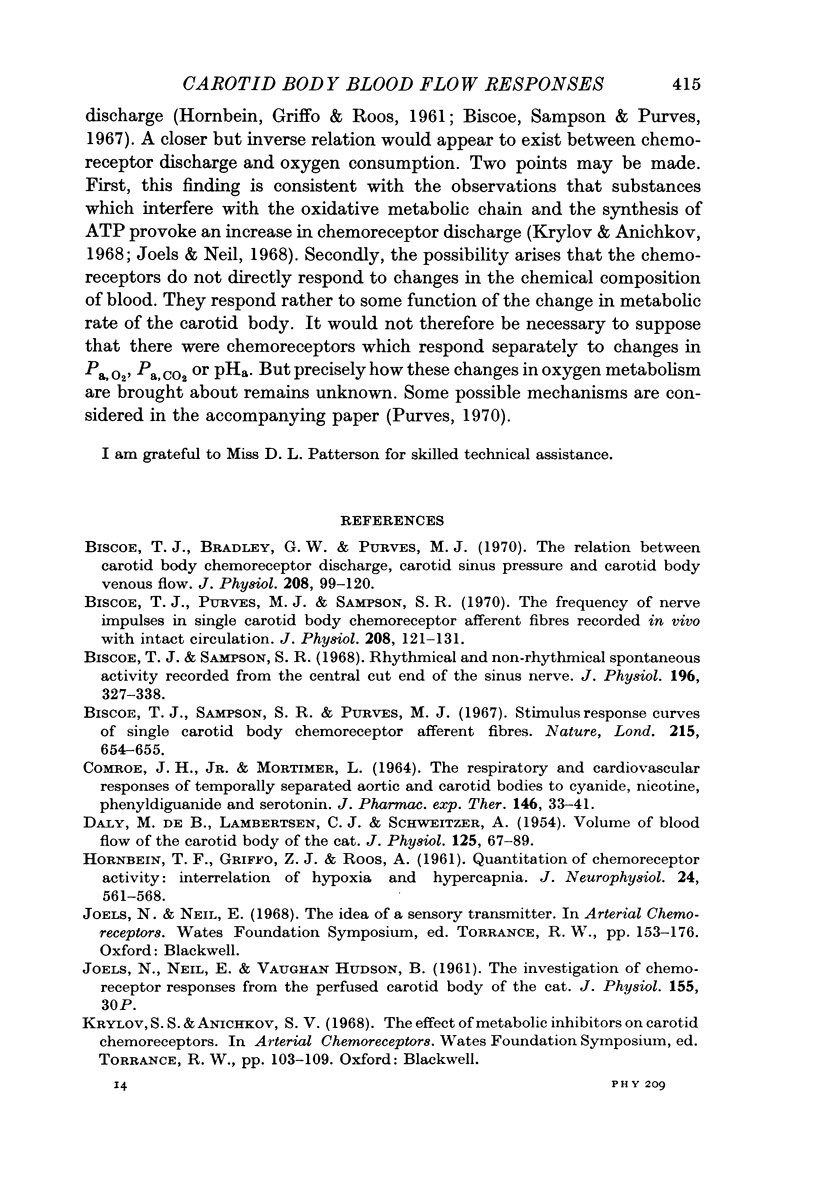
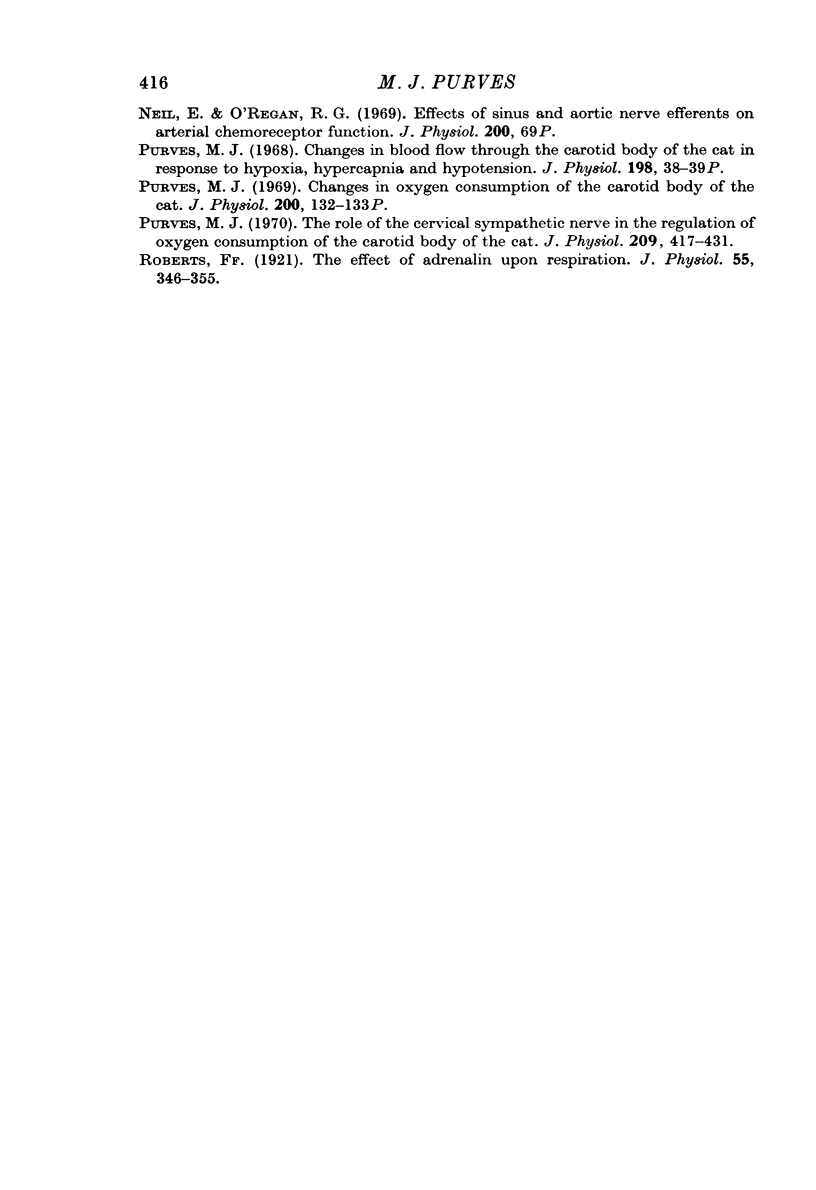
Selected References
These references are in PubMed. This may not be the complete list of references from this article.
- Biscoe T. J., Bradley G. W., Purves M. J. The relation between carotid body chemoreceptor discharge, carotid sinus pressure and carotid body venous flow. J Physiol. 1970 May;208(1):99–120. doi: 10.1113/jphysiol.1970.sp009108. [DOI] [PMC free article] [PubMed] [Google Scholar]
- Biscoe T. J., Purves M. J., Sampson S. R. The frequency of nerve impulses in single carotid body chemoreceptor afferent fibres recorded in vivo with intact circulation. J Physiol. 1970 May;208(1):121–131. doi: 10.1113/jphysiol.1970.sp009109. [DOI] [PMC free article] [PubMed] [Google Scholar]
- Biscoe T. J., Sampson S. R. Rhythmical and non-rhythmical spontaneous activity recorded from the central cut end of the sinus nerve. J Physiol. 1968 May;196(2):327–338. doi: 10.1113/jphysiol.1968.sp008510. [DOI] [PMC free article] [PubMed] [Google Scholar]
- Biscoe T. J., Sampson S. R. Stimulus response curves of single carotid body chemoreceptor afferent fibres. Nature. 1967 Aug 5;215(5101):654–655. doi: 10.1038/215654a0. [DOI] [PubMed] [Google Scholar]
- COMROE J. H., Jr, MORTIMER L. THE RESPIRATORY AND CARDIOVASCULAR RESPONSES OF TEMPORALLY SEPARATED AORTIC AND CAROTID BODIES TO CYANIDE, NICOTINE, PHENYLDIGUANIDE AND SEROTONIN. J Pharmacol Exp Ther. 1964 Oct;146:33–41. [PubMed] [Google Scholar]
- DE BURGH DALY M., LAMBERTSEN C. J., SCHWEITZER A. Observations on the volume of blood flow and oxygen utilization of the carotid body in the cat. J Physiol. 1954 Jul 28;125(1):67–89. doi: 10.1113/jphysiol.1954.sp005143. [DOI] [PMC free article] [PubMed] [Google Scholar]
- HORNBEIN T. F., GRIFFO Z. J., ROOS A. Quantitation of chemoreceptor activity: interrelation of hypoxia and hypercapnia. J Neurophysiol. 1961 Nov;24:561–568. doi: 10.1152/jn.1961.24.6.561. [DOI] [PubMed] [Google Scholar]
- Neil E., O'Regan R. G. Effects of sinus and aortic nerve efferents on arterial chemoreceptor function. J Physiol. 1969 Jan;200(1):69P–71P. [PubMed] [Google Scholar]
- Purves M. J. Changes in oxygen consumption of the carotid body of the cat. J Physiol. 1969 Feb;200(2):132P–133P. [PubMed] [Google Scholar]
- Purves M. J. The role of the cervical sympathetic nerve in the regulation of oxygen consumption of the carotid body of the cat. J Physiol. 1970 Aug;209(2):417–431. doi: 10.1113/jphysiol.1970.sp009172. [DOI] [PMC free article] [PubMed] [Google Scholar]
- Roberts F. The effect of adrenalin upon respiration. J Physiol. 1921 Nov 18;55(5-6):346–355. doi: 10.1113/jphysiol.1921.sp001980. [DOI] [PMC free article] [PubMed] [Google Scholar]


